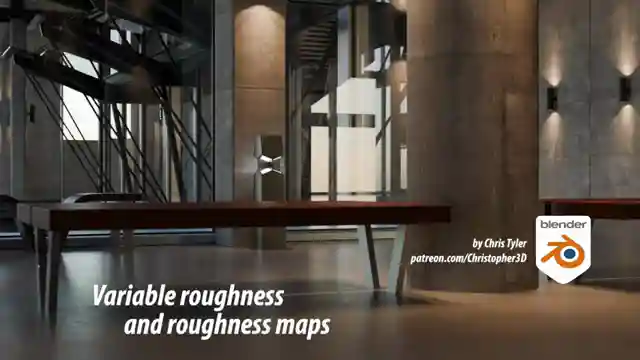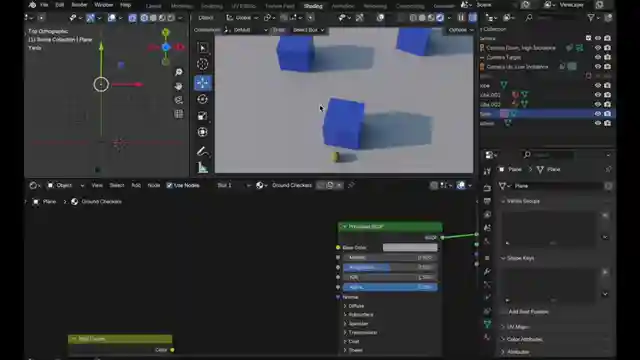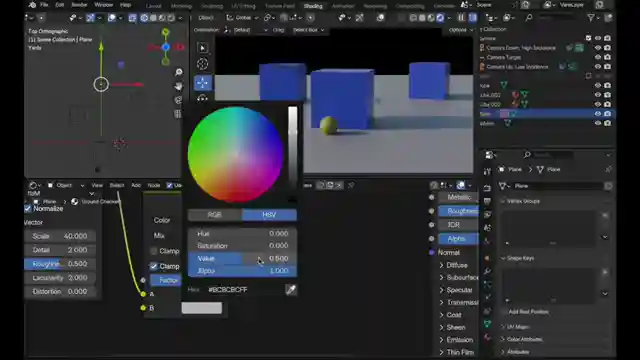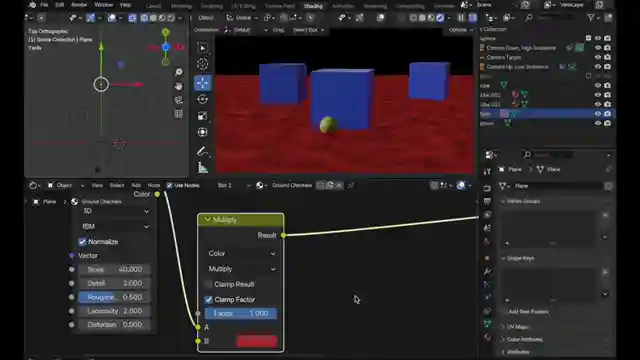Mastering 3D Realism: Roughness Maps and Variable Reflectance Tutorial

- Authors
- Published on
- Published on
In this riveting tutorial from Christopher 3D, viewers are taken on a journey through the intricate world of variable roughness and reflectance in 3D rendering. The team tackles a burning question that has been on everyone's minds: how to seamlessly integrate a roughness map atop variable reflectance for that extra touch of realism. By showcasing a simple yet effective node setup, Christopher 3D sets the stage for a masterclass in achieving unparalleled visual depth in digital creations. With a floor as a prime example, the team demonstrates how surfaces can transition from rough and glossy to mirror-like reflections based on viewing angles, mirroring real-world intricacies.
Through the deft use of a noise texture and mix color node, Christopher 3D unveils the key to unlocking precise control over surface roughness. By skillfully blending the noise texture with a defined roughness value, the team showcases the power of nuanced adjustments in creating visually stunning 3D environments. Delving into the intricacies of the factor slider in different transfer modes, such as mix and multiply, the tutorial sheds light on the art of balancing texture details with overall roughness for optimal impact. This meticulous approach not only enhances the realism of digital surfaces but also empowers artists to fine-tune every aspect of their creations with precision.
Moreover, by emphasizing the role of glancing angles through the layer weight node, Christopher 3D adds another layer of sophistication to the rendering process. The strategic interplay between the noise texture map and uniform roughness elevates the final output to new heights of visual fidelity and complexity. With a keen eye for detail and a deep understanding of rendering dynamics, Christopher 3D showcases how subtle adjustments can make a monumental difference in the overall look and feel of 3D scenes. This tutorial is not just a technical walkthrough but a testament to the artistry and craftsmanship that go into creating immersive digital worlds.

Image copyright Youtube

Image copyright Youtube

Image copyright Youtube

Image copyright Youtube
Watch Variable Roughness, mixing with roughness map for more realism. on Youtube
Viewer Reactions for Variable Roughness, mixing with roughness map for more realism.
Viewers appreciate the importance of the video in improving Blender materials
Requests for more tutorials and demonstrations with different setups
Suggestions for improvements in video quality and efficiency
Questions about implementing techniques in different rendering engines
Queries about applying the technique to all materials and why it's not default in Cycles
Discussions on the use of Layer Weight node for various effects
Clarifications on the use of mix nodes and factor strength
Surprised that the Fresnel effect is not already implemented in Blender's Principled BSDF
Related Articles

Master Blender Workflow: Bevel Modifier, Limited Dissolve & Object Changes
Discover workflow efficiency tips in Blender! Learn about using the bevel modifier for angled edges, limited dissolve for bezier curves, and applying changes to multiple objects simultaneously. Master 3D modeling tricks for seamless design.

Mastering Direct Polygon Modeling: Retro Camera Tutorial
Discover the power of direct polygon modeling vs. subdivision surfaces in mechanical modeling with Christopher 3D. Learn how to import Adobe Illustrator profiles into Blender, tackle tessellation challenges, and master precision modeling techniques to create a stunning retro camera model.

Mastering UV Mapping for Design Precision
Learn how Christopher 3D's UV mapping technique establishes precise physical sizes for design work, ensuring uniform texel density and accurate printing outcomes.

Master UV Mapping in Blender: Tips for Precise Texture Application
Learn UV mapping in Blender with Christopher 3D: establish object sizes, apply checkerboard patterns, maintain texture consistency, project UVs, add seams for closed objects. Master precise mapping for professional design projects.
